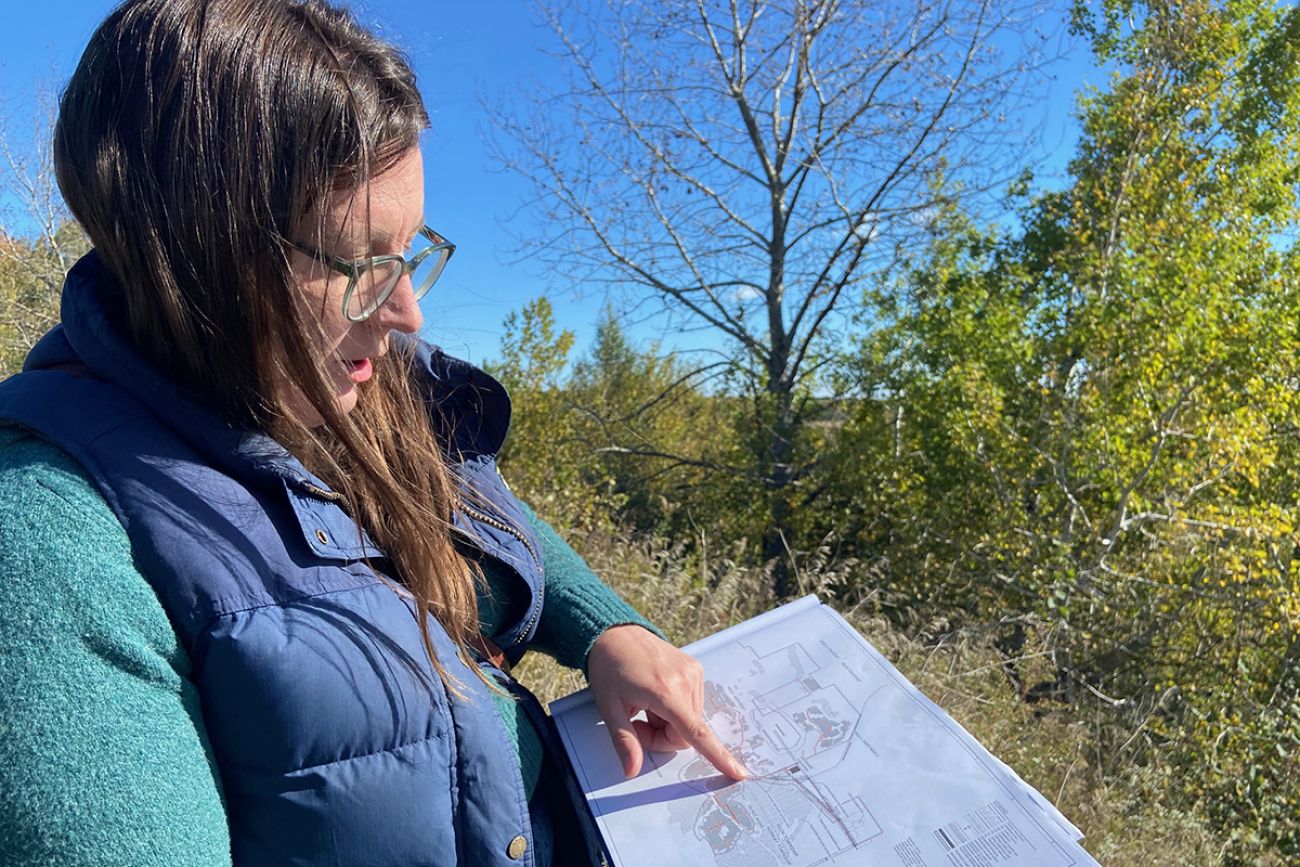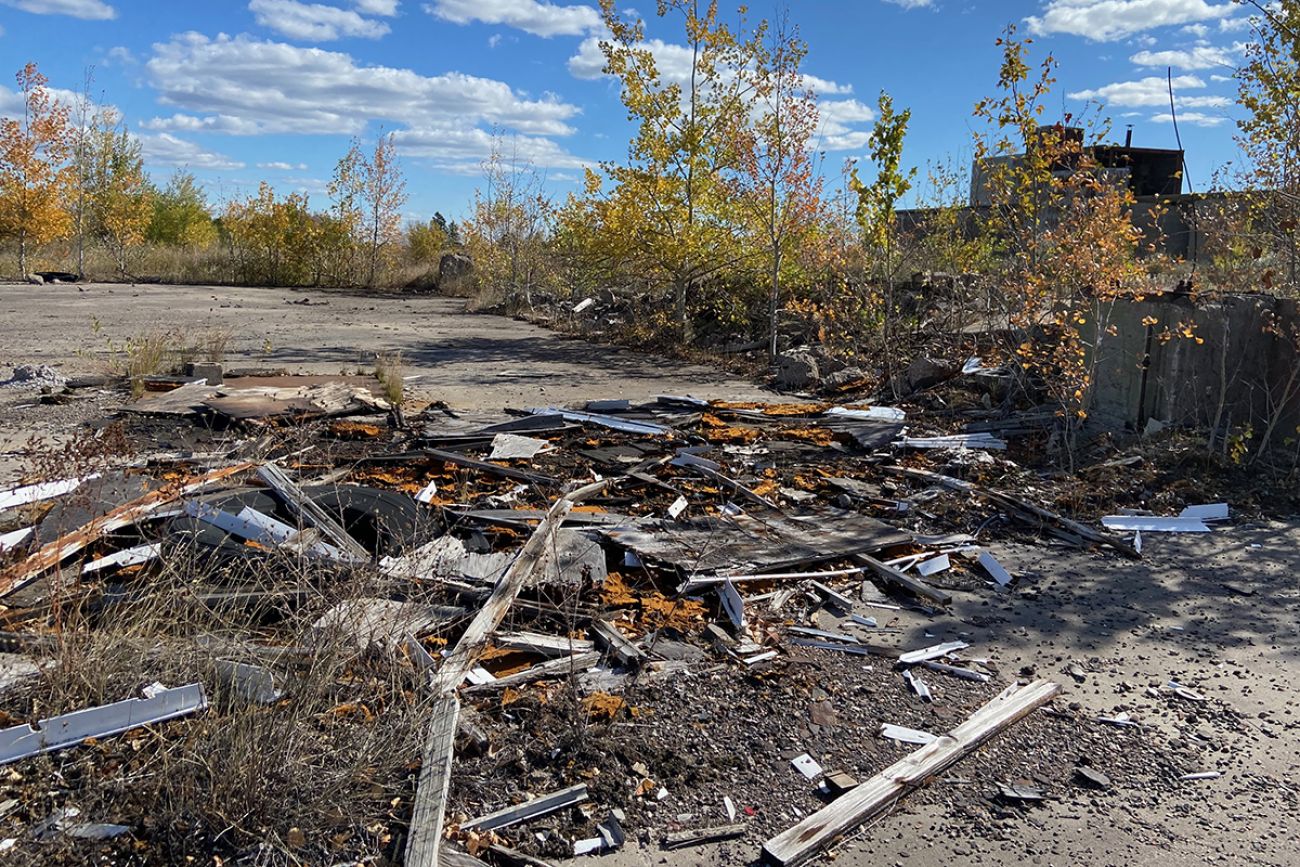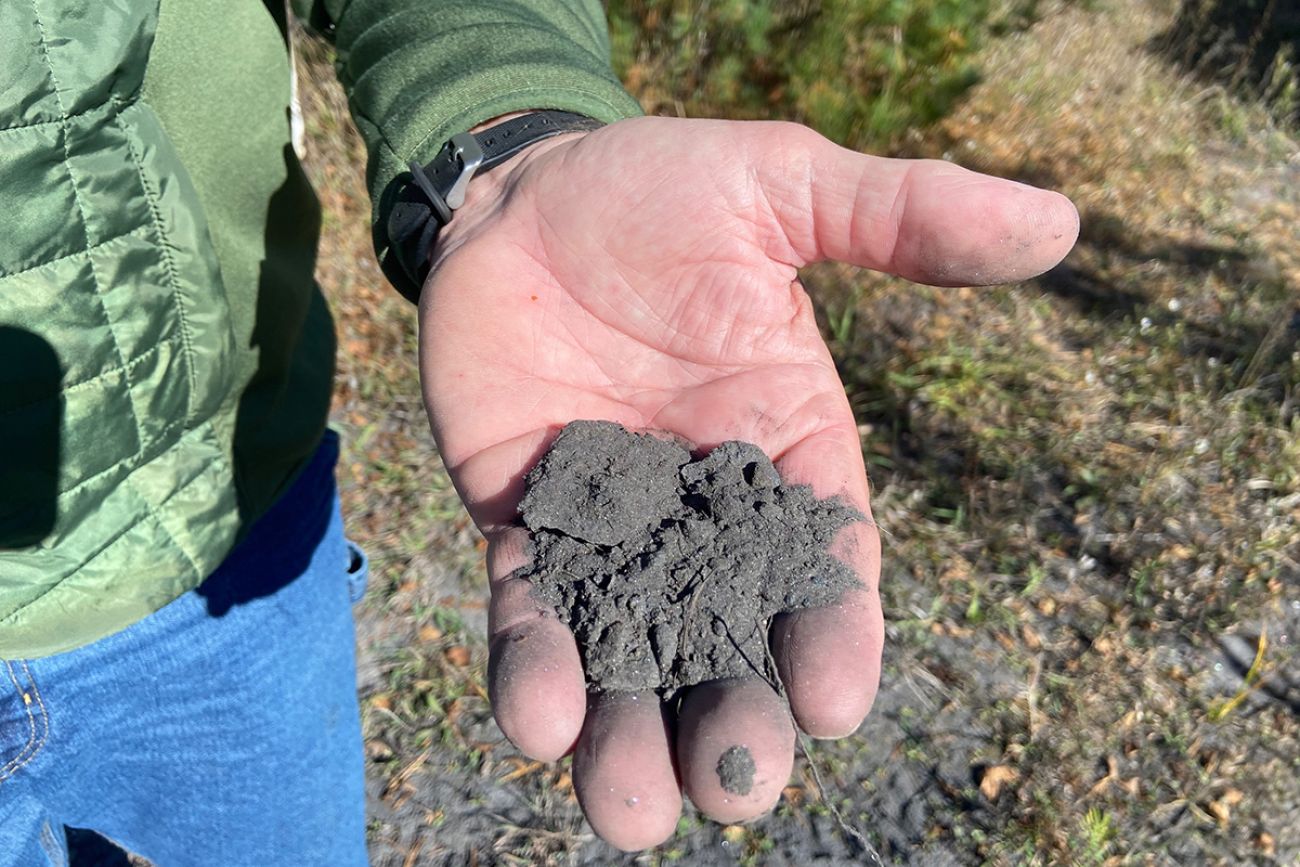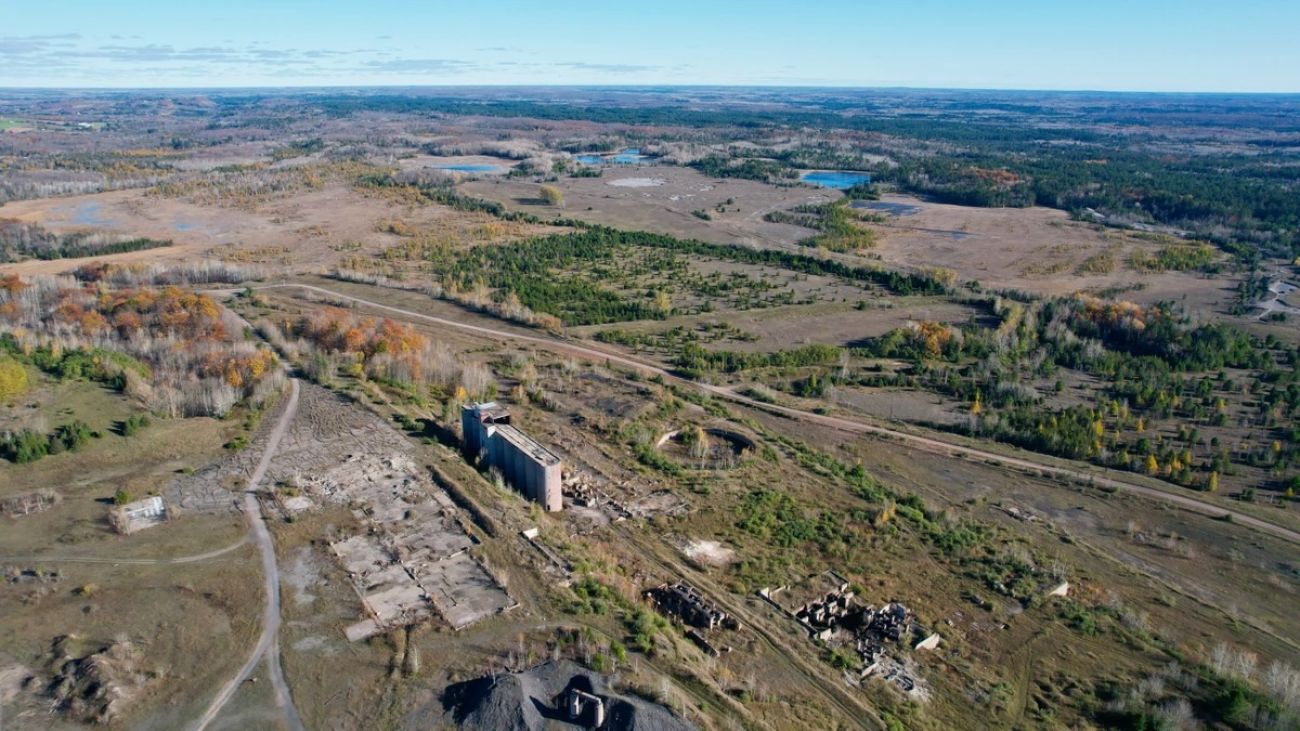Deep in the UP, an abandoned mine could offer hope for green energy fights

- Michigan needs lots of land to meet energy goals, but communities often object to wind and solar farms
- In the UP, plans for a solar array on a closed mine were approved without much controversy
- Advocates say the model could provide hope to other projects
FELCH TOWNSHIP — Solar power panels soon could stretch across a former open-pit iron mine here, atop land now polluted with tangled rebar, broken glass and crushed waste rock.
Royal Oak-based Circle Power Renewables plans to soon break ground on a 120-megawatt array at the former Groveland Mine site in Dickinson County, eventually covering some 500 acres with enough solar panels to power 17,600 homes.
Unlike many other energy arrays nowadays, local governments approved the proposal without much fuss. The 185,000-panel project is expected to be up and running in 2028 and operate for at least 30 years.
The secret to its success: The project is on property nobody else wants. That’s a possible breakthrough to stalemates that are now routine over industrial-scale wind and solar farm proposals amid Michigan’s transition to cleaner energy.
“I would say, probably 100% positively, that it wouldn’t have gone if it wasn’t on a brownfield,” said Felch Township Trustee Darwin Dixon, who voted in favor of the Groveland project.

It was easier to support converting a long-vacant eyesore into a project that will generate more than $12 million in taxes to local governments over the next three decades, he said.
“Nobody was using it anyway,” Dixon said.
It’s a strategy that’s picking up steam as Michigan races to achieve a carbon-neutral electricity sector by 2040. But even the biggest boosters acknowledge it’s a small piece of the solution. Michigan needs some 209,000 additional acres of wind and solar, and most brownfields are only a few dozen acres in size.
“You need so many things for a project to work… ,” said Jordan Roberts, CEO of Circle Power. “Unfortunately, we couldn't just build on 10,000 Grovelands tomorrow.”
A shuttered mine, a lesson learned
On a recent afternoon, former miner Kevin Sundholm shuttled a Bridge Michigan reporter around the former mine site where he spent five years working alongside hundreds of colleagues in the western Upper Peninsula.
Back then, the mine was a major employer and contributor to the local tax base. But since Groveland ceased operations in 1981, it has joined a long list of abandoned industrial sites that scar Michigan’s landscape.
In the decades since, said Sundholm, 66, “it’s just kind of sat here.”

In an era predating laws that require today’s mining companies to clean up after closing, the Hanna Mining Co. simply left its mess behind before it went defunct. The state of Michigan eventually inherited hundreds of acres, including several mining ponds that have become popular destinations for swimming, fishing and camping.
But the rest of the property is what is known as a tailings basin, a vast area where powdered waste rock was deposited as a byproduct of the mining process. The land has little public recreational value. It can't grow timber. The state Department of Natural Resources has tried, but trees struggle to grow in the sand-like material.
Related:
- Michigan has 9 months to figure out new energy law. Some say time is wasting
- Local governments take aim at Michigan’s wind, solar law in new lawsuit
- Proposed state oversight of solar, wind pits energy needs v. rural rights
- Wind wars: Wind turbines put green energy on the ballot in mid-Michigan
- UP mine sees recycling as path to more EV minerals and a greener image
For 43 years, the land has seen little use, other than the occasional hunter or partying teenager. Meanwhile, neighboring communities have struggled without the jobs and tax revenue that Groveland once provided.
So when the DNR started looking for companies willing to lease the land for a utility-scale solar project, officials with Circle Power were intrigued.
The company had been rethinking its business model after scrapping plans to build wind turbines in the Keweenaw Peninsula amid fierce public opposition.
“We look back on that as a real learning experience,” said Roberts, the Circle Power CEO.
Company officials realized that people who might otherwise support renewable energy will often oppose developments that change the character of their community, whether that’s turning farmland into solar arrays or putting wind turbines on forestland.
Around the same time, state land managers were pondering how public lands could support the state’s energy transition.
Already, private companies lease state leases forests and mineral rights for timber production, mining, oil drilling and other activities. But the public also owns plenty of “orphan” industrial sites — former landfills, mines, auto plants and other properties abandoned by private industry with dim redevelopment prospects.
“We saw this opportunity to recycle this land into something useful,” said Patrick Mohney, senior lands program manager for the DNR.
Groveland seemed like a natural fit for Circle Power officials, who were repositioning the company to focus on developing projects that local communities could embrace.
While communities across Michigan often reject proposals to develop renewable energy on farms or undeveloped land, a majority of local officials in Felch, Norway and Sagola townships have approved of the Groveland plan.
In addition to making use of otherwise undesirable land, supportive officials welcomed the opportunity to recoup some of the tax revenue that was lost when Groveland closed.
“In a small township you can't afford to do all the things you want to do,” said Dixon, the Felch Township trustee. “So every little bit of income helps out.”

Circle Power officials signed an agreement that guarantees local governments and schools will receive a combined $12.7 million over the project’s 30-year life, and possibly more.
Beyond taxes, Circle Power has agreed to build the project with union labor, and has offered $150,000 for local scholarships and recreation projects.
Those gestures were designed to build trust. Elsewhere in Michigan, local governments have felt deceived when renewable energy companies wooed them with promises of tax revenue, only to later ask the Michigan Tax Tribunal for a lower tax bill.
“We wanted to make sure that communities had the peace of mind that when we came and we said that we were going to be generating property taxes, they could rely on that,” said Elise Matz, the company’s vice president of public affairs.
Unlike the iron mine that came before it, the solar project owner will be required to properly dismantle the solar array at the end of its life.
That’s not to say everyone loves the idea of installing it at the former mine site. Norway Township Clerk Joyce Giuliani, who opposes the project, told Bridge Michigan she thinks it’s a “waste of money” that will ultimately raise energy costs.
A ‘no-brainer’
Given Michigan’s identity as a heavily-industrial state with lots of polluted and abandoned sites, some see brownfield-to-green energy conversions as a potential model.
It “seems like a no-brainer,” said Sarah Mills, an expert in renewable energy land use who directs the Center for EmPowering Communities at the University of Michigan’s Graham Sustainability Institute.
A national survey conducted by Mills and other researchers at Lawrence Berkeley National Laboratory, Michigan State University and U-M suggests it would be an easier sell for neighbors, too. Most respondents strongly preferred putting renewables on disturbed land instead of forests or farms.
Developers across the region are taking note.
Along the Saginaw Bay shoreline, a plan is underway to put an 85-megawatt solar array on the former site of the Dan E. Karn coal power plant, which closed in 2023. Similar plans are emerging for other shuttered coal plants throughout the Great Lakes region.
And the RACER Trust, an entity tasked with cleaning up and finding buyers for contaminated factory sites that General Motors abandoned during its 2009 bankruptcy, is marketing several of the properties to solar energy developers.
Meanwhile, the state of Michigan last year won a $129 million grant from the US Environmental Protection Agency to expand renewable energy, a portion of which will be used to subsidize renewable energy projects on brownfields.
In fact, Michigan’s new renewable energy siting law requires developers to show they’ve looked into vacant industrial property and brownfields before asking the state to permit a project on undeveloped land.
Michigan Environment Watch
Michigan Environment Watch examines how public policy, industry, and other factors interact with the state’s trove of natural resources.
- See full coverage
- Subscribe
- Share tips and questions with Bridge environment reporter Kelly House
Michigan Environment Watch is made possible by generous financial support from:
Our generous Environment Watch underwriters encourage Bridge Michigan readers to also support civic journalism by becoming Bridge members. Please consider joining today.
See what new members are saying about why they donated to Bridge Michigan:
- “In order for this information to be accurate and unbiased it must be underwritten by its readers, not by special interests.” - Larry S.
- “Not many other media sources report on the topics Bridge does.” - Susan B.
- “Your journalism is outstanding and rare these days.” - Mark S.
If you want to ensure the future of nonpartisan, nonprofit Michigan journalism, please become a member today. You, too, will be asked why you donated and maybe we'll feature your quote next time!






